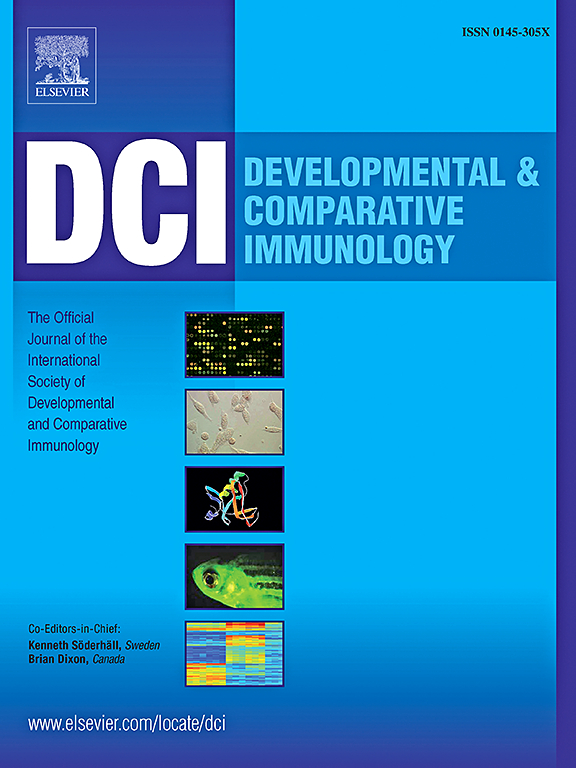Dysregulated proinflammatory cytokines and immune-related miRNAs in ASK cells exposed to 17⍺-Ethynyl estradiol and 4-nonylphenol
IF 2.7
3区 农林科学
Q1 FISHERIES
引用次数: 0
Abstract
Endocrine Disruptor Compounds (EDCs) in the aquatic environment have acquired pronounced relevance due to their toxic effect on the aquatic flora and fauna. Xenoestrogens are EDCs that possess estrogenic activity and, thus, disrupt normal estrogen signaling, affecting different functions, such as immune system processes. Two relevant xenoestrogens discarded into fresh and seawater are 4-nonylphenol (NP) and 17⍺-Ethynyl Estradiol (EE2). Considering that the piscicultures of Salmo salar can be located at sites of potential exposure to xenoestrogen-containing effluxes, it is crucial to understand the effect of xenoestrogens on the immune response and its possible molecular mechanism in this species. Our studies reveal an increase in the expression of the receptor era and erb at early times of exposure, a disrupted expression of pro-inflammatory cytokines (il1b and tnfa), an upregulation of ssa-miR-146a-5p, ssa-miR-125 b-5p, and downregulation of ssa-miR-145–5p in ASK cells exposed to estrogen and xenoestrogen, could potentially lead to new strategies for mitigating the effects of xenoestrogens on Salmo salar immune response.
暴露于 17⍺-Ethynyl estradiol 和 4-nonylphenol 的 ASK 细胞中的促炎细胞因子和免疫相关 miRNA 失调。
水生环境中的内分泌干扰物(EDCs)对水生动植物具有毒性影响,因此已成为一种重要的相关物质。异雌激素是具有雌激素活性的 EDCs,因此会破坏正常的雌激素信号传递,影响免疫系统过程等不同功能。被丢弃到淡水和海水中的两种相关异雌激素是 4-壬基酚(NP)和 17⍺-乙炔基雌二醇(EE2)。考虑到 Salmo salar(鲑鱼)的养鱼场可能位于潜在暴露于含异性雌激素外流物的地点,了解异性雌激素对该物种免疫反应的影响及其可能的分子机制至关重要。我们的研究发现,在暴露的早期,受体 era 和 erb 的表达增加,促炎细胞因子(il1b 和 tnfa)的表达紊乱,ssa-miR-146a-5p、在暴露于雌激素和异雌激素的 ASK 细胞中,ssa-miR-146a-5p、ssa-miR-125 b-5p 的上调和ssa-miR-145-5p 的下调有可能导致减轻异雌激素对鲑鱼免疫反应影响的新策略。
本文章由计算机程序翻译,如有差异,请以英文原文为准。
求助全文
约1分钟内获得全文
求助全文
来源期刊
CiteScore
6.20
自引率
6.90%
发文量
206
审稿时长
49 days
期刊介绍:
Developmental and Comparative Immunology (DCI) is an international journal that publishes articles describing original research in all areas of immunology, including comparative aspects of immunity and the evolution and development of the immune system. Manuscripts describing studies of immune systems in both vertebrates and invertebrates are welcome. All levels of immunological investigations are appropriate: organismal, cellular, biochemical and molecular genetics, extending to such fields as aging of the immune system, interaction between the immune and neuroendocrine system and intestinal immunity.

 求助内容:
求助内容: 应助结果提醒方式:
应助结果提醒方式:


